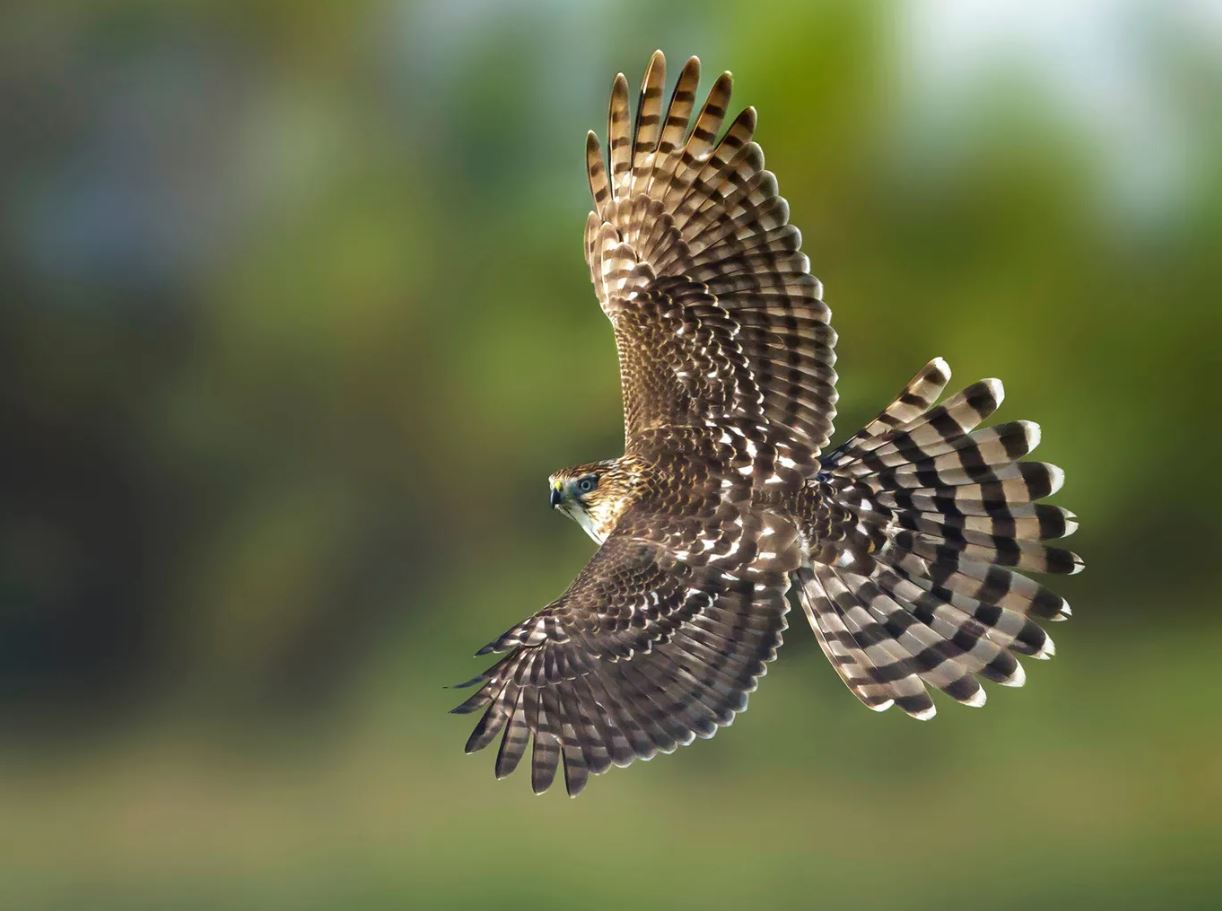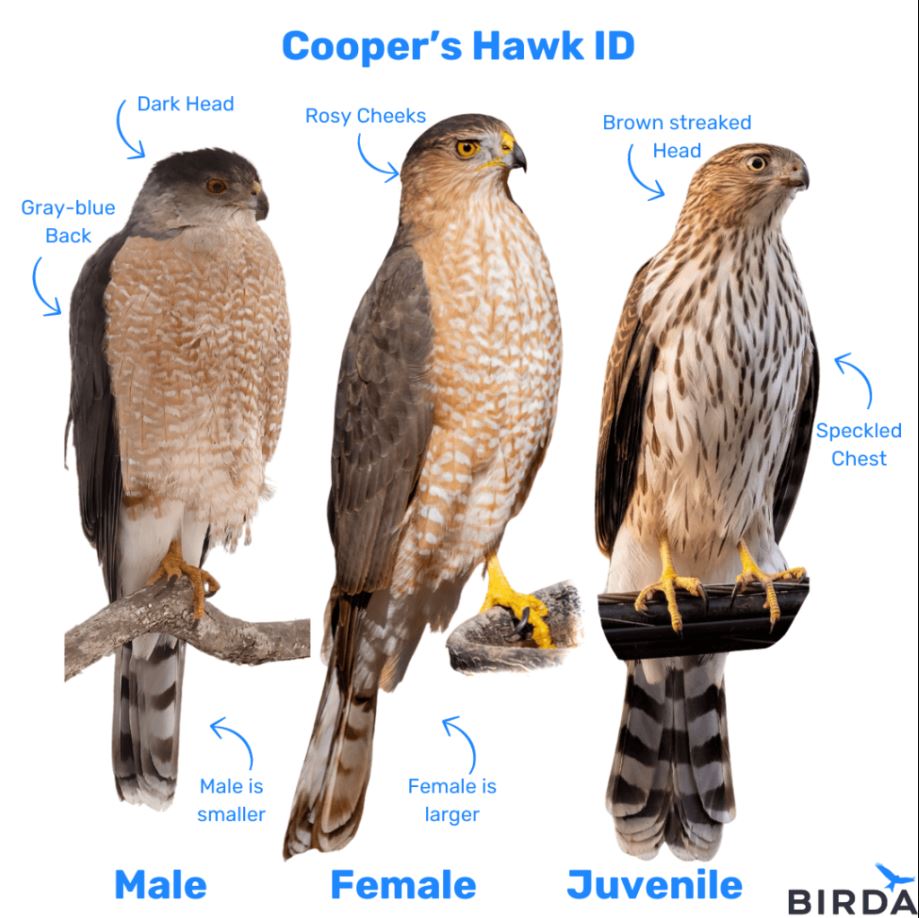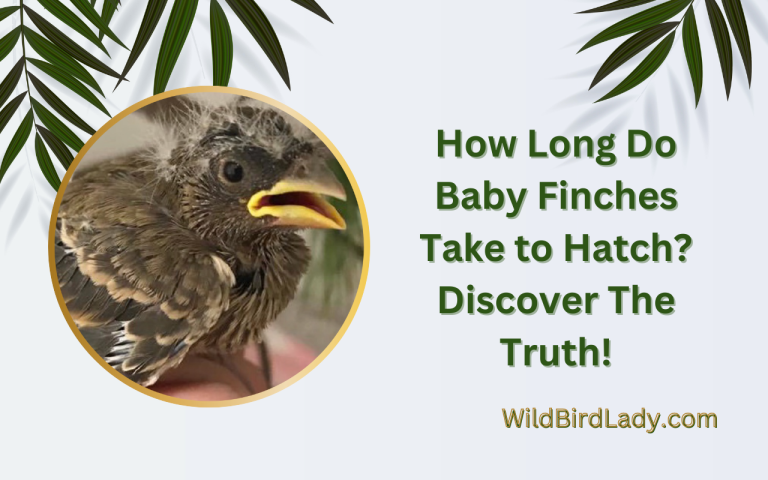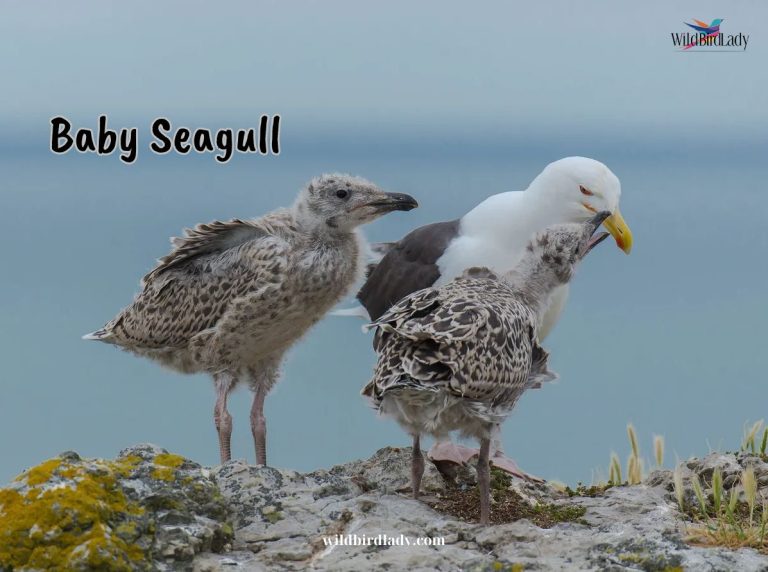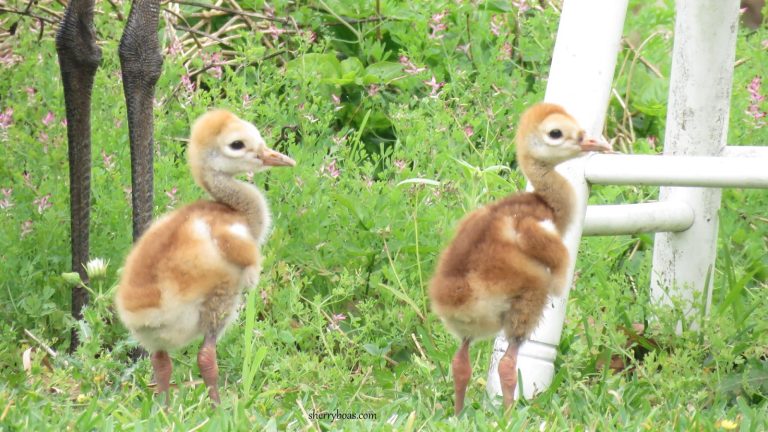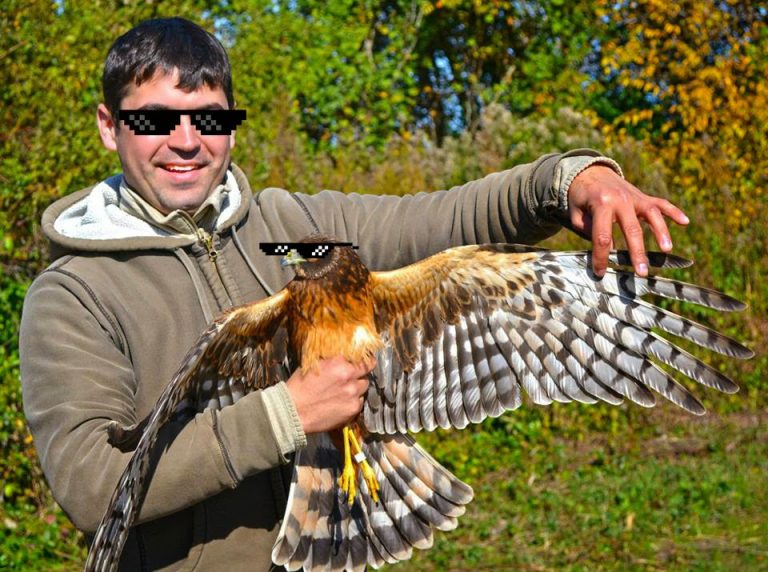Juvenile Cooper’s Hawk: A Deep Dive into the Life of a Young Raptor
There’s something magical about spotting a juvenile Cooper’s hawk for the first time. I still remember my earliest sighting — perched quietly on a suburban fence, its piercing yellow eyes scanning the ground for prey. At first glance, I mistook it for a sharp-shinned hawk, but the stockier build and longer tail gave it away. Over the past 13 years, I’ve tracked and observed countless young Cooper’s hawks, and in this guide, I’ll take you deep into their world — from fluffy hatchlings to agile, sharp-eyed predators.
Whether you’re a backyard birder or a seasoned naturalist, understanding juvenile Cooper’s hawks helps you appreciate the development of one of North America’s most skillful avian hunters.
What Is a Juvenile Cooper’s Hawk?
A juvenile Cooper’s hawk refers to a young bird that has recently fledged but hasn’t yet reached full adulthood. These birds typically range from 5 weeks to 12 months old. They’re in a transitional stage — still learning to hunt efficiently and developing the agility and confidence of an adult raptor.
The Cooper’s hawk (Accipiter cooperii) is a medium-sized bird of prey, native to North America. It belongs to the Accipiter genus, known for its short, rounded wings and long tail — features adapted for fast, agile flight through forests.
Identifying Baby Cooper’s Hawks
Baby Cooper’s hawks, also called chicks or nestlings, are born completely helpless. Their development follows a rapid timeline:
- Hatching: After about 33–36 days of incubation, the chicks hatch covered in white down.
- 1–2 weeks: They begin growing juvenile feathers and open their eyes fully.
- 3–4 weeks: Feathers continue developing, and they start testing their wings in the nest.
- 5–6 weeks: Fledging occurs. The chicks leave the nest but stay nearby for parental support.
At this stage, we classify them as juvenile Cooper’s hawks.
🔍 Fun Fact: According to the Cornell Lab of Ornithology, Cooper’s hawks typically raise 3–5 young per brood.
Plumage and Physical Differences: Juvenile vs Adult
Juvenile Cooper’s Hawk Appearance
- Eye color: Yellow
- Breast feathers: Vertical brown streaks on a white or buffy background
- Back and wings: Brownish with pale edges, giving a scaled appearance
- Tail: Long and rounded with narrow dark bands
Adult Cooper’s Hawk Appearance
- Eye color: Deep red to orange
- Breast feathers: Fine, horizontal reddish bars on a white chest
- Back and wings: Slate-gray to blue-gray
- Tail: Long, rounded with a white tip and broader dark bands
This plumage shift typically occurs during the first molt after the hawk’s first year.
Where to Find Juvenile Cooper’s Hawks
As adaptable raptors, Cooper’s hawks are found throughout North America, from southern Canada to Mexico.
Common Habitats for Juveniles:
- Suburban neighborhoods: Especially near bird feeders
- Mixed woodlands: Especially deciduous forests
- City parks: Where pigeons, starlings, and other prey thrive
- Edge habitats: The border between open spaces and wooded areas
In my personal birdwatching notes, juveniles are most active around late summer and early fall, when they’ve left the nest and are learning to hunt on their own.
Behavior of Juvenile Cooper’s Hawks
Juvenile hawks are curious, clumsy, and bold. Watching them practice hunting is both entertaining and heartwarming.
Key Behaviors:
- Mobbing birds: Often chased or scolded by smaller birds like jays or robins
- Chasing prey: Frequently miss during early hunts
- Begging calls: Continue calling to parents even after fledging
- Sibling interaction: Sometimes seen together for a few weeks post-fledging
Their lack of precision in early hunting attempts can sometimes help identify them more easily than adults.
Diet and Hunting Practice
Juvenile Cooper’s hawks are carnivorous, relying on their parents for food during the first few weeks after fledging. As they grow, they begin hunting small prey themselves.
What Do Juvenile Cooper’s Hawks Eat?
- Small birds (sparrows, finches, doves)
- Rodents (mice, voles)
- Insects (grasshoppers, beetles)
- Reptiles (small lizards or snakes)
They often hunt by perch-and-pounce or stealth flying — hiding near a feeder or moving low through cover before striking.
Citation: The Raptor Center at the University of Minnesota confirms that diet plays a crucial role in the development of flight strength and accuracy in juvenile raptors.
Vocalizations and Communication
One way to detect a baby Cooper’s hawk or juvenile nearby is through their distinctive calls.
Typical Calls Include:
- Whining cries: Used by fledglings to beg for food
- Sharp “keh-keh-keh”: Alarm or territorial calls
- Short chirps: Used between siblings or to locate parents
You can hear audio recordings of these calls on Xeno-Canto, a reputable bird sound library.
Threats and Survival Challenges
Young Cooper’s hawks face several dangers as they navigate early life:
Natural Threats
- Predation: Great horned owls, red-tailed hawks, raccoons, and snakes may target nests
- Starvation: A failed hunt or abandoned nest can be fatal
- Injury: Inexperience in flight often leads to collisions with windows or cars
Human-Caused Threats
- Window strikes: Especially common in urban areas
- Rodenticide poisoning: Consuming poisoned prey can be lethal
- Habitat destruction: Urban development removes nesting and hunting grounds
To reduce mortality, organizations like the American Bird Conservancy recommend using bird-safe glass and avoiding rodenticides in residential areas.
Tips for Observing and Photographing Juvenile Cooper’s Hawks
Capturing a photo of a juvenile Cooper’s hawk in the wild is one of the most rewarding experiences in birdwatching. However, these young raptors are often cautious, quick, and well-camouflaged, which makes observing and photographing them a test of both patience and skill. Over my 13+ years in the field, I’ve picked up several techniques that not only increase your chances of a sighting but also ensure ethical birding practices.
Best Practices for Spotting and Shooting
1. Use a Long Telephoto Lens (300mm or higher)
Juvenile hawks are wary of human presence, especially when they’re still learning to navigate the world. A long lens allows you to capture intimate moments without invading their space. I personally use a 400mm lens with image stabilization for sharp results from a safe distance.
2. Approach Slowly and Minimize Movement
Sudden gestures or fast walking can easily spook young hawks. Instead, move slowly and steadily, keeping your body low. If you spot one perched, freeze and assess its comfort level before raising your camera.
3. Scout Early in the Morning or Late Afternoon
These raptors are most active at dawn and dusk, especially during warm months when they hunt in cooler hours. Morning light also offers ideal photography conditions with soft, golden tones that enhance plumage detail.
4. Stake Out High-Traffic Areas Like Bird Feeders or Water Sources
Juvenile Cooper’s hawks are frequent visitors to backyard bird feeders—not to eat seeds, but to ambush smaller birds. They’re also drawn to shallow birdbaths or garden ponds. Position yourself at a distance with a clear line of sight.
5. Use Natural Cover to Stay Hidden
Find a spot near bushes, trees, or tall grasses that can break up your outline. If you’re in an open area, wear muted colors or camouflage. In some locations, using a pop-up blind can increase your odds dramatically.
6. Be Quiet and Avoid Eye Contact
Birds, especially hawks, perceive direct eye contact as a threat. Avoid locking eyes with them for extended periods. Keeping silent—even turning off your camera’s shutter sound—can help you linger longer without causing distress.
7. Never Disturb a Nest or Force a Shot
If you find a juvenile near a nest, observe from a respectful distance. Never climb trees, remove branches, or flush the bird to get a better angle. The moment you disturb their natural behavior, you’ve crossed an ethical line.
Ethical Birding First, Photography Second
It’s easy to get caught up in the excitement of getting the “perfect shot,” but remember: these are wild birds navigating a fragile period of their lives. Any stress caused by human presence can interfere with their feeding, learning, or safety.
Organizations like the Audubon Society and the American Birding Association emphasize the importance of ethical bird photography—which includes maintaining a respectful distance, avoiding playback sounds, and prioritizing the well-being of the bird over the quality of the image.
Conclusion
The life of a juvenile Cooper’s hawk is filled with wonder, peril, and rapid development. From a helpless baby Cooper’s hawk to a skilled forest hunter, this bird’s transformation is nothing short of extraordinary.
As a birdwatcher with over a decade of experience, I’m always captivated by their energy, courage, and resilience. Every fledgling I spot is a reminder of nature’s beauty in transition.
Next time you’re in your backyard or a nearby park, look up — you might just catch a young Cooper’s hawk practicing its moves.
FAQs
1. How can I tell if a Cooper’s hawk is juvenile?
Look for yellow eyes, vertical brown streaks on the chest, and brownish plumage with pale edges.
2. Do juvenile Cooper’s hawks stay near the nest?
Yes, they usually remain in the vicinity for several weeks, relying on their parents while learning to hunt.
3. Are baby Cooper’s hawks noisy?
Very. They emit constant begging calls until they are capable hunters.
4. How long does it take for a baby Cooper’s hawk to mature?
It typically takes about one year for a juvenile to molt into full adult plumage.
5. Do juvenile Cooper’s hawks migrate?
Yes, many northern populations migrate south during winter, even juveniles.

